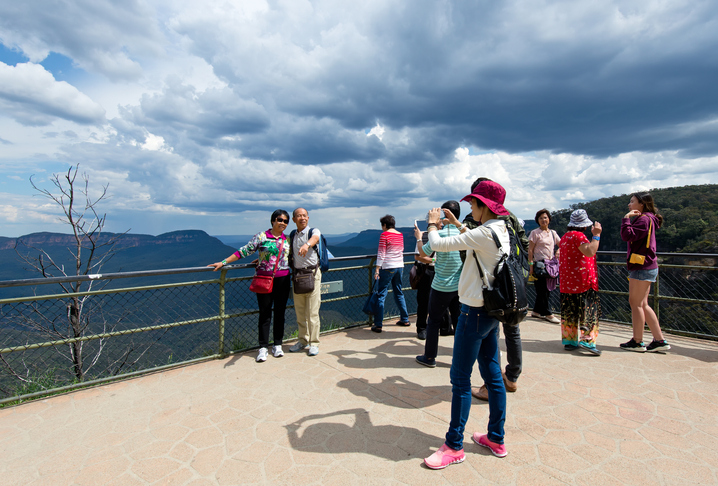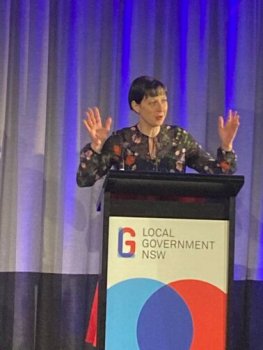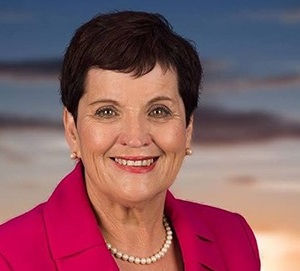
NSW local governments need to do more to ensure they don’t miss out on the economic benefits of tourism, a conference has heard, and introducing a statewide tourism levy is one way to do that.

The LGNSW Destination and Visitor Economy conference in Sydney this week heard that councils need to prepare for an upswing in tourism, and should ensure they do everything to leverage the benefits.
One way for LGAs to get revenue out of tourists is via a levy, such as a bed tax, Anthea Hammon, vice president of the Blue Mountains Accommodation and Tourism Association told a panel discussion on Tuesday.
“The tourists don’t give any money to LGAs, the community pays all these rates, what do the tourists give us?” she said. “What I’m here to say, is we need to change that.
“We need to find ways where tourists put dollars into the pockets of the LGAs. I think a tourism levy, collectively across the state, is what we need.”
The idea isn’t new. LGQA passed a motion calling for tourism levy at its annual conference last October, and councils including Blue Mountains and Collingwood in Victoria are also exploring ways to leverage the tourist dollar via a municipal levy.
Introducing a focused tourism levy was also one of the recommendations of a tourism industry reference panel convened by the Queensland government last June.
Opinion divided
A levy could take the form of a bed tax, such as a $2 levy for every room night, which could go to local councils to raise money for tourism infrastructure and destination marketing, Ms Hammon said.
Cairns Regional Council, which moved the bed tax motion last year, estimated it would raise at least $16 million a year if it charged visitors a levy of 2 to 2.5 per cent on each night’s accommodation.
In a statement ahead of the conference last year, Cairns Mayor Bob Manning said visitor levies were well established and accepted throughout the world.

“In Cairns, a visitor levy of just 2.5 per cent on short term accommodation, which equates to less than the cost of a cup of coffee, would raise more than $16 million per annum for destination marketing and tourism industry development,” he said.
LGAQ CEO Alison Smith told Government News the association is continuing to push for the State Government to consult with councils on a visitor levy.
That included advocating for a Visitor Levy Advisory Group for councils to work with the state to change the Local Government Act to so local governments could implement a visitor levy on an ‘opt-in’ model.
“Resulting funds would go directly back into the local tourism sector, driving more visitors, more spending and more jobs,” she said.
Northern Beaches counsellor Candy Bingham backed the idea of a levy.
“Like most regions we provide an awful lot for tourists,” she said from the floor during the panel discussion on Tuesday.
“We have a lot of day visitors – if we’re lucky they buy an ice cream. They bring their own lunch, they use all our facilities and they leave their rubbish when they go, and we’re expected to provide enormous infrastructure.”
We get enough flack about collecting rates, let alone having a bed tax or a tourism tax.
Mayor Phyllis Miller
But Forbes Mayor Phyllis Miller said she wouldn’t be supporting a tourism levy.
“I would not support anything that was collected by my local council,” she said.
“We get enough flack about collecting rates, let alone having a bed tax or a tourism tax .. I would never support us as councils collecting those taxes.”
Concerns were also raised about whether the state government could be trusted to return a visitor levy to LGAs, given disappointment over the handling of the waste levy, which has largely ended up sitting in consolidated state revenue.
‘Sweating LGA assets
Councils can also get more from the tourist dollar making sure their assets are bookable, payable and social-media friendly, Ms Hammon said.
“We need to sweat the LGA assets,” she told the conference.
“When you’re building an LGA asset you need to think how is it going to benefit tourists, how is the visitor economy going to impact and engage with this? You don’t build anything for residents anymore. You build it for both.
“Social media will spread the word to other visitors. Tourist attractions have to be designed with that in mind.
“We have to make sure if it’s a free asset, maybe it’s still bookable. We need to start thinking about using technology to make those experiences bookable, and potentially also payable.”
Western Sydney Airport a game changer
Following the Covid downturn, the biggest problem for councils will be how to deal with too many tourists, Ms Hammon, who is also Director of the Western Parkland City Authority and board member of the Western Sydney Airport, said.
She said the new 24/7 Western Sydney airport, which is set to cater for 10 million passengers a year by the early 2023s, will impact tourism across the whole state.
Your ability to pull people in for a weekend away improved the minute this airport opened.
Anthea Hammon
“For anywhere west of Sydney – the Blue mountains, Central west, and north west – Melbourne and Brisbane just got more than an hour closer to you,” she said.
“So your ability to pull people in for a weekend away improved the minute this airport opened.
“It’s not just about western Sydney, it’s about how we move people out of Sydney to the regions and how much easier that’s going to be when they’re based in Western Sydney.
“There will be a huge up lift in people coming to NSW and Sydney in the next ten years that are looking for things to do.”
Tourism or terrorism
But the increase in visitors will also bring challenges.
“Over-tourism is going to be our biggest challenge,” Ms Hammon said.
“We are going to have to work collectively and strategically to work out how we’re going to manage it.
“You need to know your visitors, you need to know who you want in your LGA and who you don’t. who do you want to attract and how do you attract them?
“Importantly we all need to help our communities understand the value of the visitor economy – tourist or terrorist?”
“It is really critical that we get that balance with the community, to make sure we are getting revenue.
“I love our tourists, I love creating a great visitor experience, but I don’t agree that they should be doing it all for free.”
$42b tourism injection

LGNSW president Darriea Turley told the conference for the year ending December 2022, visitors injected almost $42 billion into the NSW economy and there were almost 95.5 million visitors who spent a collective 157 million nights in the state.
Sixty-eight per cent of that was domestic overnight visitors, 20 per cent day trips and 12 per cent was international visitors.
“NSW is Australia’s top visitor destination for total volume of international and domestic overnight and day trip visitors, Sydney is number one among all capital cities, and regional NSW accounts for a third of all visitors,” she said.
Stewart Moore, CEO and founder of Queensland based tourism advisory group EarthCheck told the conference that tourism isn’t an add-on for local government.
“It should be core to your economic strategy,” he said. “You’re probably the most active and important player in tourism because you own and manage more assets than anybody else.
“Tourism needs to sit within your economic development strategies.
“You have an opportunity to provide a leadership position – you need to embrace the visitor economy.”
Comment below to have your say on this story.
If you have a news story or tip-off, get in touch at editorial@governmentnews.com.au.
Sign up to the Government News newsletter
Local government is ill equipped to handle another task that distracts them from the main tasks at hand.
Most initiatives are undermined by a lazy private sector made up of lifestyle traders who are not interested in collaborating with event based activities outside their normal operating parameters.
Support to community interest groups can be limited as they are also resource poor in personnel and management skills in compliance with regulations and insurance requirements.
Most communities suffer tourism as a consequence of poor management rather than embracing it.